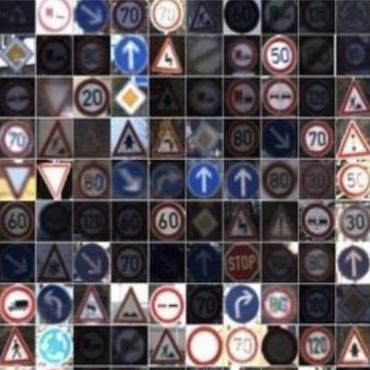Search Results for author: Faiq Khalid
Found 15 papers, 3 papers with code
Security Analysis of Capsule Network Inference using Horizontal Collaboration
no code implementations • 22 Sep 2021 • Adewale Adeyemo, Faiq Khalid, Tolulope A. Odetola, Syed Rafay Hasan
Similar to traditional CNNs, CapsNet is also vulnerable to several malicious attacks, as studied by several researchers in the literature.
FeSHI: Feature Map Based Stealthy Hardware Intrinsic Attack
no code implementations • 13 Jun 2021 • Tolulope Odetola, Faiq Khalid, Travis Sandefur, Hawzhin Mohammed, Syed Rafay Hasan
Since in horizontal collaboration of RC AIoT devices different sections of CNN architectures are outsourced to different untrusted third parties, the attacker may not know the input image, but it has access to the layer-by-layer output feature maps information for the assigned sections of the CNN architecture.
Exploiting Vulnerabilities in Deep Neural Networks: Adversarial and Fault-Injection Attacks
no code implementations • 5 May 2021 • Faiq Khalid, Muhammad Abdullah Hanif, Muhammad Shafique
From tiny pacemaker chips to aircraft collision avoidance systems, the state-of-the-art Cyber-Physical Systems (CPS) have increasingly started to rely on Deep Neural Networks (DNNs).
MacLeR: Machine Learning-based Run-Time Hardware Trojan Detection in Resource-Constrained IoT Edge Devices
no code implementations • 21 Nov 2020 • Faiq Khalid, Syed Rafay Hasan, Sara Zia, Osman Hasan, Falah Awwad, Muhammad Shafique
To reduce the overhead of data acquisition, we propose a single power-port current acquisition block using current sensors in time-division multiplexing, which increases accuracy while incurring reduced area overhead.
FANNet: Formal Analysis of Noise Tolerance, Training Bias and Input Sensitivity in Neural Networks
no code implementations • 3 Dec 2019 • Mahum Naseer, Mishal Fatima Minhas, Faiq Khalid, Muhammad Abdullah Hanif, Osman Hasan, Muhammad Shafique
With a constant improvement in the network architectures and training methodologies, Neural Networks (NNs) are increasingly being deployed in real-world Machine Learning systems.
Is Spiking Secure? A Comparative Study on the Security Vulnerabilities of Spiking and Deep Neural Networks
no code implementations • 4 Feb 2019 • Alberto Marchisio, Giorgio Nanfa, Faiq Khalid, Muhammad Abdullah Hanif, Maurizio Martina, Muhammad Shafique
We perform an in-depth evaluation for a Spiking Deep Belief Network (SDBN) and a DNN having the same number of layers and neurons (to obtain a fair comparison), in order to study the efficiency of our methodology and to understand the differences between SNNs and DNNs w. r. t.
RED-Attack: Resource Efficient Decision based Attack for Machine Learning
1 code implementation • 29 Jan 2019 • Faiq Khalid, Hassan Ali, Muhammad Abdullah Hanif, Semeen Rehman, Rehan Ahmed, Muhammad Shafique
To address this limitation, decision-based attacks have been proposed which can estimate the model but they require several thousand queries to generate a single untargeted attack image.
CapsAttacks: Robust and Imperceptible Adversarial Attacks on Capsule Networks
no code implementations • 28 Jan 2019 • Alberto Marchisio, Giorgio Nanfa, Faiq Khalid, Muhammad Abdullah Hanif, Maurizio Martina, Muhammad Shafique
Capsule Networks preserve the hierarchical spatial relationships between objects, and thereby bears a potential to surpass the performance of traditional Convolutional Neural Networks (CNNs) in performing tasks like image classification.
Security for Machine Learning-based Systems: Attacks and Challenges during Training and Inference
no code implementations • 5 Nov 2018 • Faiq Khalid, Muhammad Abdullah Hanif, Semeen Rehman, Muhammad Shafique
Therefore, computing paradigms are evolving towards machine learning (ML)-based systems because of their ability to efficiently and accurately process the enormous amount of data.
QuSecNets: Quantization-based Defense Mechanism for Securing Deep Neural Network against Adversarial Attacks
1 code implementation • 4 Nov 2018 • Faiq Khalid, Hassan Ali, Hammad Tariq, Muhammad Abdullah Hanif, Semeen Rehman, Rehan Ahmed, Muhammad Shafique
Adversarial examples have emerged as a significant threat to machine learning algorithms, especially to the convolutional neural networks (CNNs).
SSCNets: Robustifying DNNs using Secure Selective Convolutional Filters
1 code implementation • 4 Nov 2018 • Hassan Ali, Faiq Khalid, Hammad Tariq, Muhammad Abdullah Hanif, Semeen Rehman, Rehan Ahmed, Muhammad Shafique
In this paper, we introduce a novel technique based on the Secure Selective Convolutional (SSC) techniques in the training loop that increases the robustness of a given DNN by allowing it to learn the data distribution based on the important edges in the input image.
SIMCom: Statistical Sniffing of Inter-Module Communications for Run-time Hardware Trojan Detection
no code implementations • 4 Nov 2018 • Faiq Khalid, Syed Rafay Hasan, Osman Hasan, Muhammad Shafique
We present a run-time methodology for HT detection that employs a multi-parameter statistical traffic modeling of the communication channel in a given System-on-Chip (SoC), named as SIMCom.
FAdeML: Understanding the Impact of Pre-Processing Noise Filtering on Adversarial Machine Learning
no code implementations • 4 Nov 2018 • Faiq Khalid, Muhammmad Abdullah Hanif, Semeen Rehman, Junaid Qadir, Muhammad Shafique
Deep neural networks (DNN)-based machine learning (ML) algorithms have recently emerged as the leading ML paradigm particularly for the task of classification due to their superior capability of learning efficiently from large datasets.
TrISec: Training Data-Unaware Imperceptible Security Attacks on Deep Neural Networks
no code implementations • 2 Nov 2018 • Faiq Khalid, Muhammad Abdullah Hanif, Semeen Rehman, Rehan Ahmed, Muhammad Shafique
Most of the data manipulation attacks on deep neural networks (DNNs) during the training stage introduce a perceptible noise that can be catered by preprocessing during inference or can be identified during the validation phase.
A Roadmap Towards Resilient Internet of Things for Cyber-Physical Systems
no code implementations • 16 Oct 2018 • Denise Ratasich, Faiq Khalid, Florian Geissler, Radu Grosu, Muhammad Shafique, Ezio Bartocci
Furthermore, this paper presents the main challenges in building a resilient IoT for CPS which is crucial in the era of smart CPS with enhanced connectivity (an excellent example of such a system is connected autonomous vehicles).







